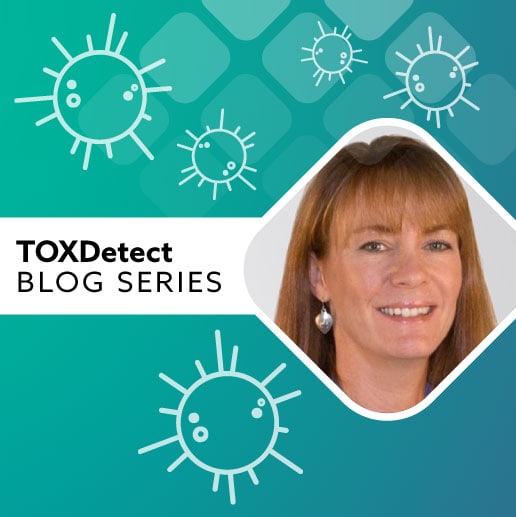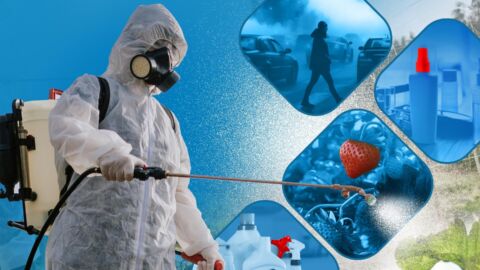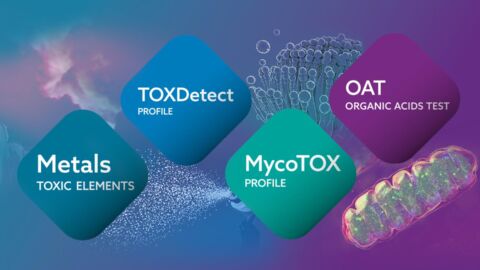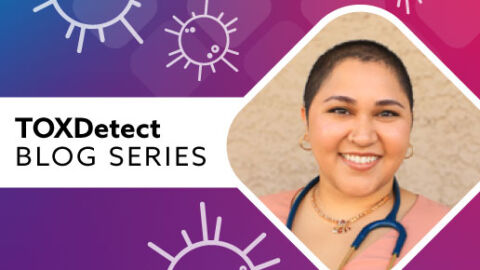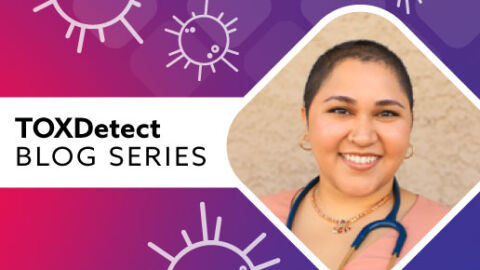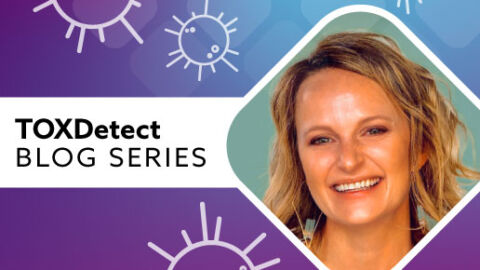In an era where environmental toxicants are pervasive, healthcare providers are increasingly faced with challenges addressing their potential impacts on patient health. Bisphenols, Parabens, Phthalates, Volatile Organic Compounds (VOCs), Pesticides, and other environmental toxicants are ubiquitous, infiltrating our bodies through air, water, food, and consumer products. Important clinical considerations when working with known or suspected exposure are to assess exposures, inform and educate about avoidance strategies, understand the health impacts, and guide personalized therapeutic approaches. MosaicDX’s TOXDetect Profile® is a valuable tool to support healthcare providers for assessing and quantifying 27 metabolites of common environmental toxicants.
Assess Exposures: Identify Environmental Toxicants
Environmental toxicants can be challenging to detect due to their often-subtle presence in everyday environments. Understanding a patient’s exposure to these substances is critical for developing effective treatment strategies.
One essential initial step in assessing exposures is conducting a thorough environmental exposure history intake. This process helps uncover potential hidden sources of toxicants in a patient’s home, workplace, and daily activities.
Tips for Conducting an Environmental Exposure History Intake:
- Ask Specific Questions: Inquire about the patient’s occupation, any known chemical exposures at work, the types of products they use at home (e.g., cleaning agents, personal care products), and whether they live near industrial areas or agricultural fields.
- Evaluate Lifestyle Factors: Consider the patient’s dietary habits, including their consumption of organic vs. non-organic foods, as well as any hobbies that involve exposure to chemicals (e.g., painting, gardening, sports).
- Assess the Home & Work Environment: Investigate the presence of potential toxicants in the home, such as the use of air fresheners, building materials, new renovations, and quality of indoor air and water.
- Document Findings: Keep a detailed record of risk factors or exposures, which can inform the interpretation of TOXDetect Profile results and guide subsequent recommendations.
TOXDetect Profile provides a precise method for assessing exposure to chemical classes of toxicants. By analyzing urine samples, it focuses on these key categories of toxicants and gives more clarity in toxic burden and treatment strategies.
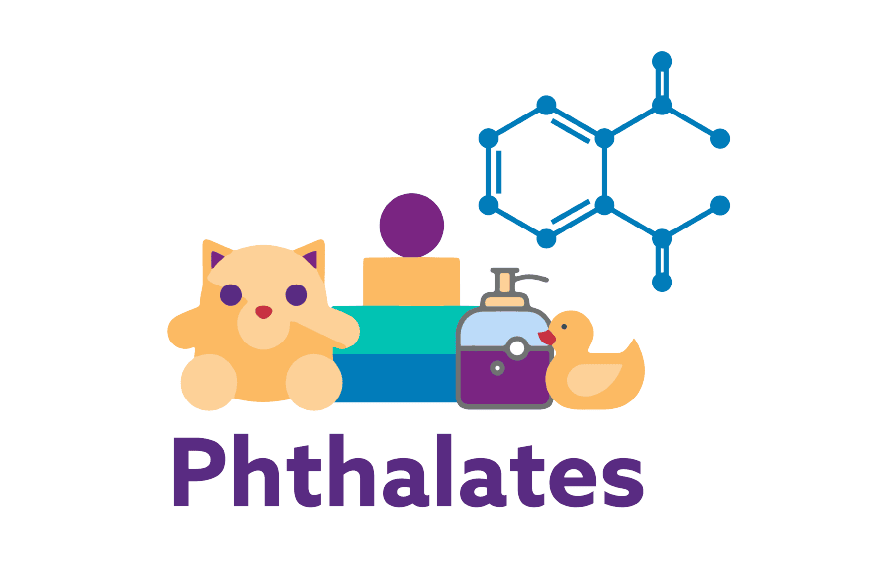
About Phthalates
Phthalates is a family of widely used chemicals found in most products that have contact with plastics during production, packaging, and delivery. They have the nickname, “the everywhere chemicals”, because they are found in hundreds of products, including toys, food packaging, shampoos, vinyl flooring, and more. They are known as endocrine disruptors and chronic exposure has been linked to reproductive and developmental issues.1
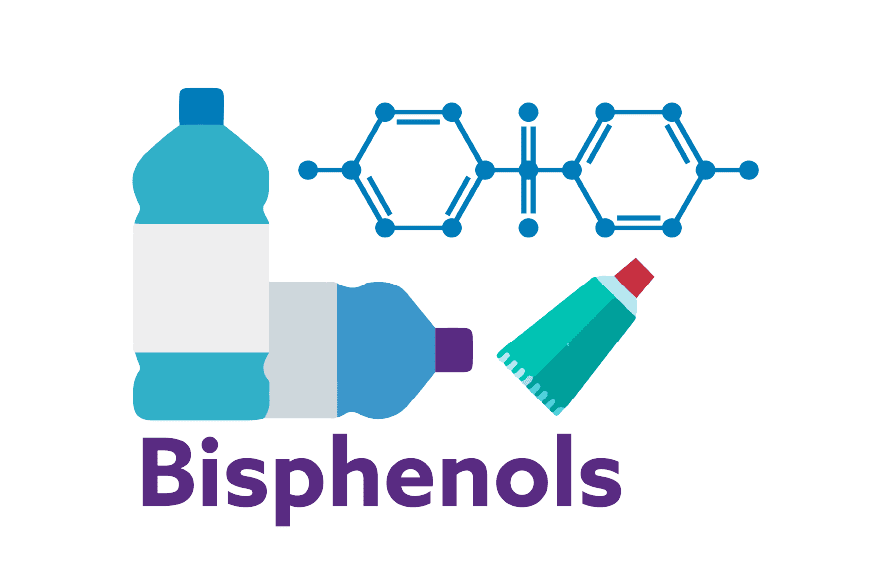
About Bisphenols
Bisphenols are used in the production of plastics and resins as well as food and drink containers, water bottles, thermal receipt papers and more. Exposure to BPA may lead to altered reproductive and developmental effects, increased risk of obesity, diabetes, cardiovascular disease, neurotoxicity and some cancers. Many companies now produce “BPA free” products; however, some BPA alternatives such as BPS have also raised concerns about potential similar and more severe health impacts.24
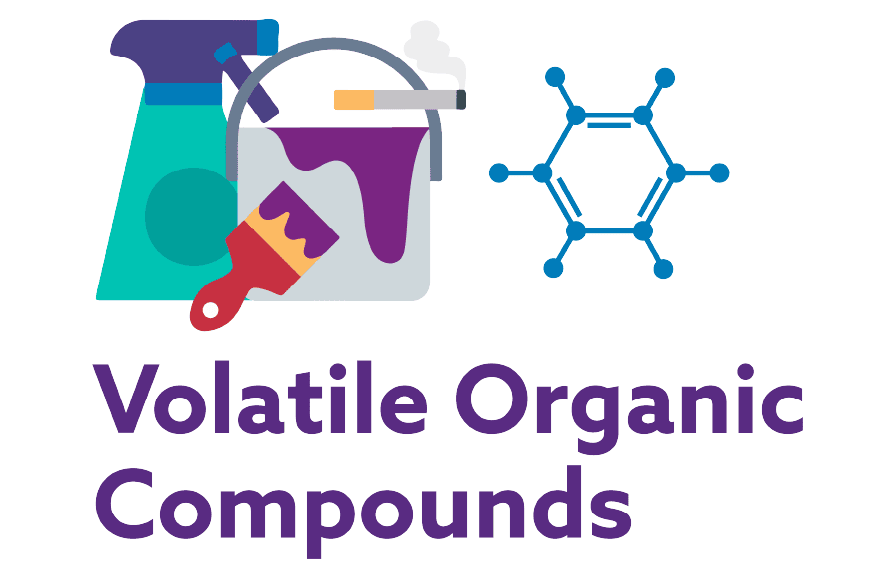
About VOCs
VOCs are chemicals that easily evaporate into the air and can originate from various sources both indoors, like household beauty products, building materials, and cigarette smoke, as well as outdoors, like vehicle emission, industrial processes, construction activities, gasoline vapors, and from paints, coatings, and sealants that contain VOCs. Long-term exposure to VOCs can result in respiratory problems, neurological impairments, and an increased risk of certain cancers.2 3
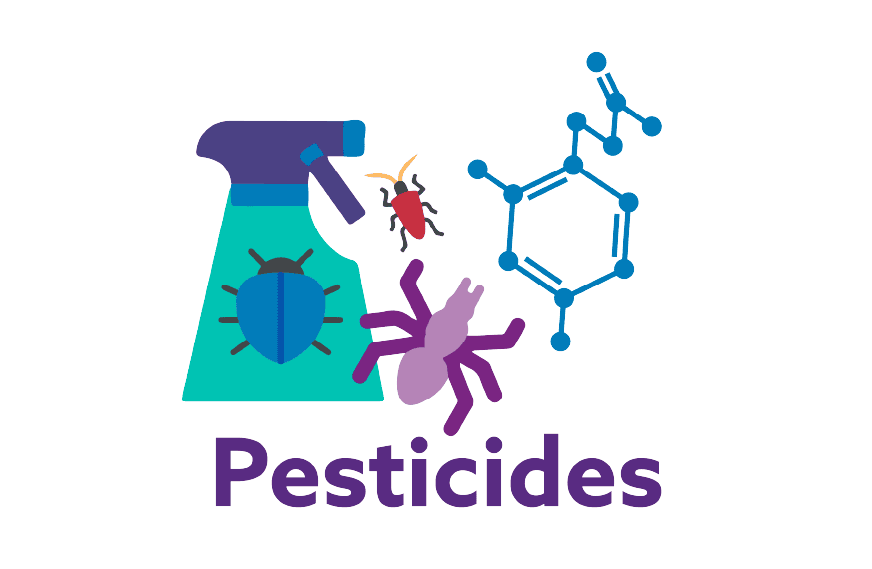
About Pesticides
Pesticides are substances or mixtures of substances intended to prevent, destroy, repel, or mitigate any pest. “Pesticides” is an umbrella term and can include chemicals such as insecticides, herbicides, fungicides, and rodenticides. Individuals can be exposed through inhalation of contaminated air, dermal contact when using, consumption of contaminated food and water, or contact with contaminated soil. Pesticides are commonly used in agriculture and unfortunately their usage raises concerns about potential environmental and health impacts.4
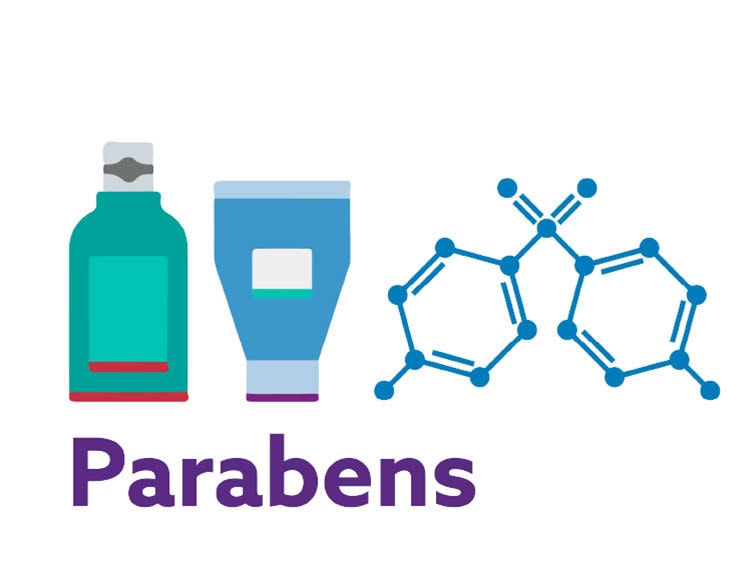
About Parabens
Parabens are synthetic chemicals used as preservatives in cosmetics, personal care products, and some foods. They are primarily used to prevent the growth of bacteria, yeast, and mold. Exposure may lead to endocrine disruption, increased body mass index (BMI), and has links to breast cancer.23 25 26
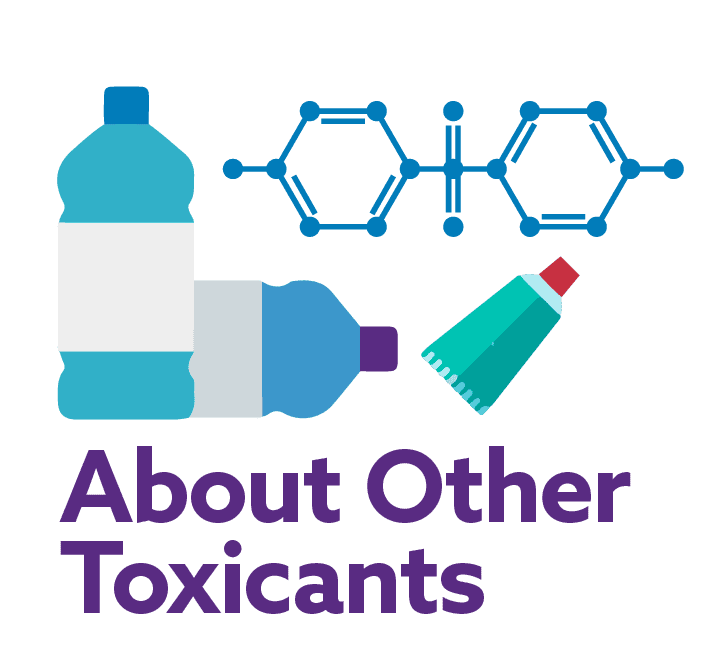
About Other Toxicants
Other environmental toxicants that do not fall under the above categories but are still found in common consumer products, food, air, and water, are detected on TOXDetect Profile to provide a more comprehensive understanding of potential environmental contributions to health issues.23
Utilizing TOXDetect Profile alongside an environmental exposure history intake allows us to gather crucial data on one’s environmental toxicant exposure, enabling you to piece together the puzzle of how these exposures may be affecting their health.
Avoidance: Strategies for Reducing Toxicant Exposure
Once exposure to environmental toxicants has been identified through TOXDetect Profile and upon intake assessment, pinpointing specific culprits and tracing them right back to their source becomes possible. With this additional information, the next crucial step is to reduce or eliminate these sources of exposure and to implement targeted avoidance strategies to decrease toxic burden and improve overall health outcomes.
By providing patients with practical strategies for avoiding environmental toxicants, you can help them take proactive steps to protect their health.
Improve Indoor Air Quality
VOCs significantly affect indoor air quality, particularly in poorly ventilated spaces. Healthcare providers should recommend the use of air purifiers with HEPA filters and ensuring adequate ventilation.5 Encourage patients to opt for low-VOC products, such as paints, adhesives, and cleaning supplies, and to avoid aerosol sprays, which can release high levels of VOCs into the air. If unable to avoid products with VOCs, have them allow for proper off gassing in open areas that they can avoid.
Water Filtration
Contaminants like pesticides and industrial chemicals are often present in drinking and bathing water. Recommending high-quality water filtration systems, such as Reverse Osmosis (RO) with activated carbon filters (with minerals added back in), can help reduce the exposure to these harmful substances.6 Patients should be advised to test their water sources regularly and avoid plastic water bottles, which may leach phthalates, and favor glass or other reusable alternatives.
Dietary Modifications
Pesticide residues are commonly found in non-organic produce. Educating patients on the benefits of consuming organic foods, particularly those on the Environmental Working Group’s “Dirty Dozen” list, can reduce their exposure to these toxicants. Encourage washing and peeling non-organic fruits and vegetables to minimize residues, and suggest avoiding foods packaged in plastic, which may contain phthalates. Remember to also encourage the use of glass containers for food storage and to not reheat foods in plastic containers to prevent phthalates leaching from plastics.
Personal Care Product Choices
Phthalates are frequently found in fragrances, cosmetics, and plastics. Advise patients to select phthalate-free personal care products, such as shampoos, lotions, and deodorants, and to avoid products with vague ingredients like “fragrance” or “parfum”. They can use apps like EWG’s Skin Deep® or Think Dirty® to help choose more ideal products.
Home Environment
VOCs and other toxicants are commonly present in household items such as furniture, carpets, and cleaning products. Encourage patients to choose non-toxic, naturally derived, or certified low-emission products whenever possible. Suggest airing out new furniture and carpets before bringing them into the home to reduce VOC exposure.7
VOCs significantly affect indoor air quality, particularly in poorly ventilated spaces. Healthcare providers should recommend the use of air purifiers with HEPA filters and ensuring adequate ventilation.5 Encourage patients to opt for low-VOC products, such as paints, adhesives, and cleaning supplies, and to avoid aerosol sprays, which can release high levels of VOCs into the air. If unable to avoid products with VOCs, have them allow for proper off gassing in open areas that they can avoid.
Contaminants like pesticides and industrial chemicals are often present in drinking and bathing water. Recommending high-quality water filtration systems, such as Reverse Osmosis (RO) with activated carbon filters (with minerals added back in), can help reduce the exposure to these harmful substances.6 Patients should be advised to test their water sources regularly and avoid plastic water bottles, which may leach phthalates, and favor glass or other reusable alternatives.
Pesticide residues are commonly found in non-organic produce. Educating patients on the benefits of consuming organic foods, particularly those on the Environmental Working Group’s “Dirty Dozen” list, can reduce their exposure to these toxicants. Encourage washing and peeling non-organic fruits and vegetables to minimize residues, and suggest avoiding foods packaged in plastic, which may contain phthalates. Remember to also encourage the use of glass containers for food storage and to not reheat foods in plastic containers to prevent phthalates leaching from plastics.
Phthalates are frequently found in fragrances, cosmetics, and plastics. Advise patients to select phthalate-free personal care products, such as shampoos, lotions, and deodorants, and to avoid products with vague ingredients like “fragrance” or “parfum”. They can use apps like EWG’s Skin Deep® or Think Dirty® to help choose more ideal products.
VOCs and other toxicants are commonly present in household items such as furniture, carpets, and cleaning products. Encourage patients to choose non-toxic, naturally derived, or certified low-emission products whenever possible. Suggest airing out new furniture and carpets before bringing them into the home to reduce VOC exposure.7
Health Impacts: The Consequences of Toxicant Exposure
Environmental toxicants are increasingly recognized for their role in a wide range of health conditions, notably systemic cellular impacts like oxidative stress and mitochondrial dysfunction.8 These can lead to other downstream effects and health impacts on the following:

Uncover the Environmental Toxicants Behind Your Unexplained Symptoms
By analyzing key metabolites, TOXDetect Profile provides personalized insights into your toxin exposure, empowering you to take control of your health.
Nervous
- Acrylamide
- Atrazine
- Benzene
- Bisphenol A (BPA)
- Bisphenol S (BPS)
- 1-Bromopropane
- Mercapturate
- Organophosphate
- Pesticides
- Phthalates
- Pyrethroid
- Styrene
- Vinyl Chloride
- Xylene
Respiratory
- Acrylonitrile
- Benzene
- 1-Bromopropane
- Phthalates
- Styrene
Reproductive
- Acrylamide
- Atrazine Mercapturate
- Bisphenol A (BPA)
- Bisphenol S (BPS)
- 1,3 Butadiene
- Ethylene Oxide
- Oxybenzone (OBZ)
- Phthalates
- Styrene
- Triphenyl Phosphate
- Vinyl Chloride
- Volatile Organic Compounds (VOCs)
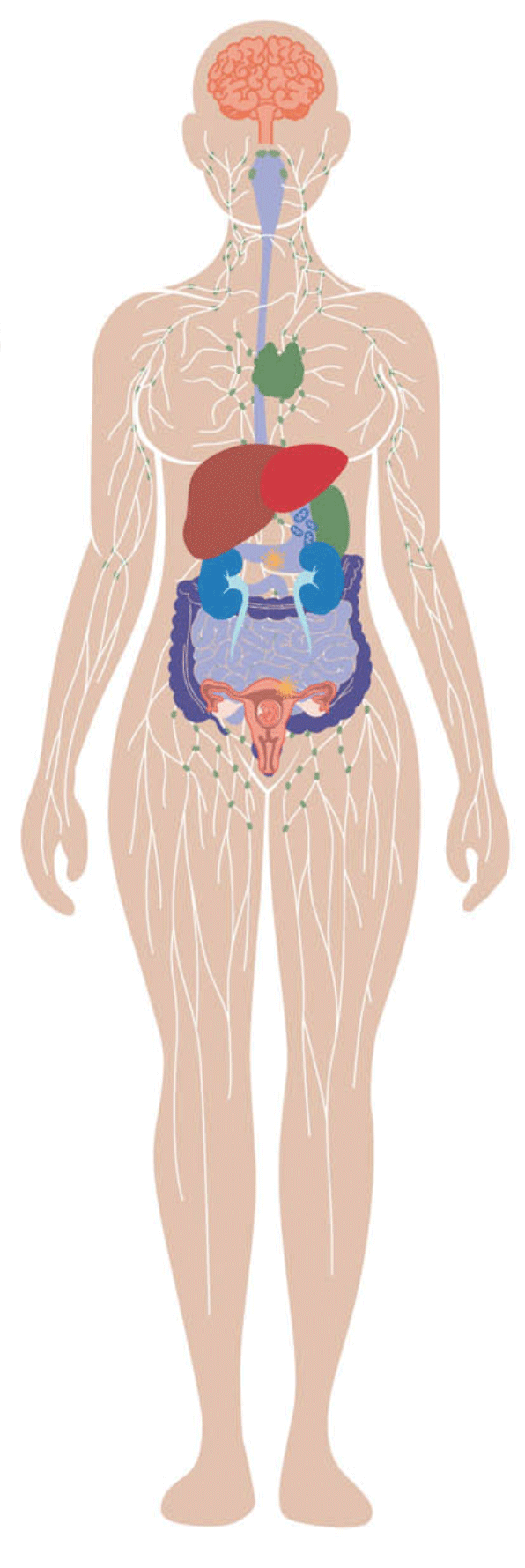
Endocrine
- Acrylamide
- Atrazine Mercapturate
- Benzene
- Bisphenol A (BPA)
- Bisphenol S (BPS)
- Oxybenzone (OBZ)
- Parabens
- Phthalates
- Perchlorate
- Phthalate
- Triphenyl Phosphate
Cardiovascular
- Acrylamide
- Benzene
- Bisphenol A (BPA)
- Bisphenol S (BPS)
- 1,3 Butadiene
- Pyrethroids
Carcinogen
- Acrylamide
- Acrylonitrile
- Atrazine Mercapturate
- Benzene
- Bisphenol A (BPA)
- Bisphenol S (BPS)
- 1,3 Butadiene
- Di (2-ethylhexyl)
- Ethylene Oxide
- Parabens
- Phthalate
- Styrene
- Vinyl Chloride
- 2,4 dichlorophenoxyacetic acid (2,4-D) (Pesticide)
- Nervous System: Certain environmental toxicants like pesticides and heavy metals can cause damage to nerve cells, leading to cognitive and memory issues, and increased risk of certain neurodegenerative pathologies.9 10 Additionally, phthalates may interfere with brain development in the developing fetus and children, which may result in learning and behavioral disruptions.11
- Endocrine System: Phthalates, bisphenols, VOCs, and parabens can mimic or block hormones, interfering with hormonal function, and leading to thyroid dysfunction and metabolic issues. Patients experiencing unexplained hormonal imbalances, infertility, or metabolic issues may have underlying toxic substance exposures.12 13 25
- Respiratory System: Prolonged exposure to VOCs and pesticides can cause airway inflammation and lead to chronic respiratory conditions and reduced lung function. 5 6
- Cardiovascular System: Certain plastic components, such as Bisphenol S (BPS), have been linked to vascular impairment and poor circulation, increasing the risk of blood pressure issues and other more severe cardiovascular diseases. This may be due to increased production of reactive oxygen species (ROS) and reduced nitric oxide (NO) bioavailability.14
- Reproductive System: Pesticides and phthalates can negatively impact fertility by altering sperm quality and hormone levels, leading to reproductive challenges for both men and women.15 Prenatal exposure to certain environmental toxicants increases the risk of congenital disabilities and developmental issues in offspring.16 BPA interacts with estrogen, androgen, and thyroid receptors leading to reproductive health risks. 24
- Carcinogenic Effects: Long-term exposure to carcinogenic toxicants like certain VOCs, BPA, parabens, pesticides, parabens, and other environmental toxicants have been linked to the development of certain types of cancer, including lung, liver, and breast. 17 24
Educating patients about the potential health impacts of toxicant exposure enables them to make informed decisions about their health and supports more targeted clinical interventions.
Personalized Therapeutics: Tailoring Interventions Based on Exposure
Once environmental toxicant exposures have been identified through a thorough intake and utilizing MosaicDX TOXDetect Profile, practitioners can develop personalized therapeutic strategies. These strategies should address the unique needs of each individual, focusing on supporting the body’s intrinsic detoxification processes, improving overall nutritional status, and implementing lifestyle modifications to enhance elimination pathways. Below are key areas to consider:
Elimination Pathways: Supporting the Body’s Natural Detoxification
The body’s ability to detoxify and eliminate toxicants relies on several key pathways, including the liver, kidneys, skin, and lungs. Each of these organs plays a vital role in processing and excreting harmful substances.
Healthcare providers can support these elimination pathways by recommending interventions such as liver-supporting nutrients, promoting adequate hydration, and inducing sweating with exercise or sauna.
Liver
The liver is central to detoxification, performing Phase I, II, and III detoxification processes to transform lipophilic toxicants into more water-soluble forms for easier excretion. Supporting liver function and enzymes that are responsible for key reactions are essential for effective detoxification.
Kidneys
The kidneys filter blood, removing waste products and water-soluble toxicants through urine. Ensuring optimal kidney function is vital for the elimination of detox end-products. Read more about detoxifying kidneys.
Skin
The skin is another important elimination pathway, primarily through sweating.
Lungs
Lastly, the lungs help eliminate volatile toxicants through exhalation.
Nutritional Support, Hydration and Targeted Supplementation
Adequate nutrition and hydration are foundational for supporting the body’s detoxification processes. Specific dietary and supplement interventions can enhance elimination:

Hydration and Nutritional Status: Proper hydration is essential for healthy kidney function and helps flush water-soluble toxicants from the body. Additionally, assessing and optimizing nutritional status – ensuring sufficient intake of vitamins, minerals, and other essential nutrients – can support overall detoxification.

Foods and Nutritional Supplements: Certain foods and supplements can enhance the body’s detoxification pathways. For example, cruciferous vegetables like broccoli and Brussels sprouts contain compounds that support liver detoxification enzymes.18 Antioxidants such as vitamin C and E help neutralize free radicals produced during detoxification.19
Lifestyle Modification
Beyond diet, certain lifestyle modifications can enhance the elimination of toxicants through various pathways:

Exercise: Regular physical activity promotes circulation, lymphatic drainage, and the function of detox organs such as the liver and kidneys. Exercise also helps reduce adipose tissue, where lipophilic toxicants may be stored, thereby potentially decreasing the body’s overall toxic burden.20

Induced Sweating: Sweating is a way to eliminate certain toxicants, even ones potentially ones stored in adipose tissue.21 Activities that induce sweating, such as sauna use or vigorous exercise, can be beneficial in increasing the excretion of toxicants through the skin.22
Summary
TOXDetect Profile offers a comprehensive approach to evaluating environmental toxicant exposures, complemented by a thorough environmental exposure history intake. This combination equips practitioners with insights needed to understand how toxicants influence patient health and to implement evidence-based avoidance strategies, address health impacts, and tailor personalized therapeutic interventions. Our goal is to empower you to proactively mitigate the effects of environmental toxicants, fostering long-term health and well-being for both you and your patients.
References
- Eales J, et al. Environ Int. 2022 Jan;158:106903.
- Alford KL, et al. Int J Environ Res Public Health. 2021 Feb 7;18(4):1578.
- Liu N, et al. Indoor Air. 2022 May;32(5):e13038.
- Mostafalou S, et al. Arch Toxicol. 2017 Feb;91(2):549-599.
- Fermo P, et al. Environ Res. 2021;197:111131.
- Seah MQ, et al. Chemosphere. 2024;356:141960.
- Alford KL, et al. Int J Environ Res Public Health. 2021;18(4):1578.
- Reddam A et al. Curr Environ Health Rep. 2022 Dec;9(4):631-649
- Alford KL, et al. Int J Environ Res Public Health. 2021;18(4):1578.
- Grandjean P, et al. Lancet Neurol. 2014;13(3):330-338.
- Yang Z, et al. Neurotoxicology. 2024;103:335-357.
- Wigle DT, et al. J Toxicol Environ Health B Crit Rev. 2007 Jan-Mar;10(1-2):3-39.
- Shetty SS, et al. Heliyon. 2023 Aug 25;9(9):e19496.
- Easson S, et al. Environ Int. 2022;170:107603.
- Uwamahoro C, et al. Int J Mol Sci. 2024;25(13):6945.
- Weng X, et al. Environ Sci Technol. 2023;57(22):8189-8212.
- Sokan-Adeaga AA, et al. 2023 Jun 29;12(2):22799036231181226.
- Nho CW, et al. Toxicol Appl Pharmacol. 2001 Jul 15;174(2):146-52.
- Okamura Y, et al. J Clin Biochem Nutr. 2018;63(1):50-57.
- Komine S, et al. Sci Rep. 2017;7(1):11977.
- Genuis SJ et, al. J Environ Public Health. 2012;2012:185731.
- Gomez-Cabrera MC, et al. Free Radic Biol Med. 2008;44(2):126-131.
- Lester C, Hewitt NJ, Müller-Vieira U, Mayer M, Ellison C, Duplan H, et al. Metabolism and plasma protein binding of 16 straight- and branched-chain parabens in in vitro liver and skin models. Toxicology in Vitro. 2021 Apr;72:105051.
- Ma Y, Liu H, Wu J, Yuan L, Wang Y, Du X, et al. The Adverse Health Effects of Bisphenol A and Related Toxicity Mechanisms. Environmental Research. 2019 Sep;176:108575.
- Kolatorova L, Sramkova M, Vitku J, Vcelak J, Lischkova O, Starka L, et al. Parabens and Their Relation to Obesity. Physiological Research. 2018 Nov 12;S465–72.
- Charles AK, Darbre PD. Combinations of parabens at concentrations measured in human breast tissue can increase proliferation of MCF‐7 human breast cancer cells. Journal of Applied Toxicology. 2013 Jan 31;33(5):390–8.
